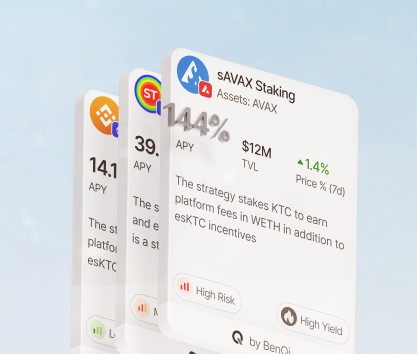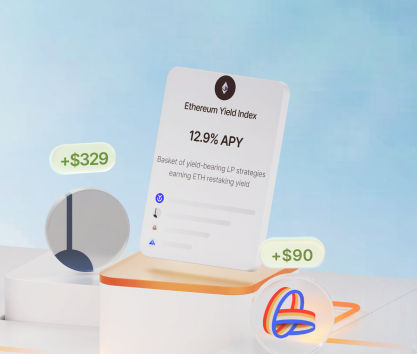The Ethereum blockchain architecture allows developers to deploy tiny programs that can operate autonomously once on the chain. Since these applications operate in a trustless and permissionless manner, the participants of the network don’t have to do anything aside from interacting with them if they so choose. This elegant setup allows for a much faster pace of development and deployment in the DeFi ecosystem while ensuring that everyone trusts everyone.
While it does require in-depth knowledge of programming languages like Rust, C+, JavaScript, or others, the deployment phase itself is relatively simple with the amount of useful tools providing the necessary means of writing prototypes, verifying code integrity, and immediate deployment on the chain.
A beginner’s guide to smart contracts
The idea of easily enforceable and independently operating applications that can execute autonomously was first proposed in the 1990s by now-famous computer scientist Nick Szabo. The main idea behind the concept of such tiny applications is that they remove the necessity for enforcement organizations, intermediaries, and other redundant or useless parts of any process that require data handling or programmable operations.
In 2014, a new architecture was proposed by the team led by Vitalik Buterin, the founder of Ethereum. Like many others, he saw the inefficiencies of the Bitcoin network limited by its initial programming. Instead of C++ used for the first cryptocurrency, Buterin proposed a foundation made with Solidity, a Turing-Complete language. In theory, the new design is more flexible and secure.
Today, you have a variety of ways to develop for Ethereum and many other networks like Solana or Polkadot. The Ethereum Virtual Machine is the golden standard in the industry allowing for the creation and deployment of various applications like ERC-20 (fungible tokens) and ERC-271 (NFTs). The set of instructions in the EVM is Turing-complete which means that they are sufficiently flexible and functional to build all sorts of programs. It can be implemented using C++, C#, Go, Python, Ruby, Rust, and even Java or WebAssembly.
New developers do not think about the consensus in the network since the very design of EVM is to be deterministic and operate in any hardware setup or operating system to ensure that nodes do not produce chaotic output leading to an inability to sustain the ledger. All operations cost gas and smart contract design must reflect the costs in its programming to ensure lower transaction prices and wider accessibility.
We assume that the reader is familiar with most popular programming languages like C++ or Java. If you have the necessary knowledge to build applications using these languages, the next step is to start learning useful tools that are designed to quickly and efficiently create programs for Ethereum.
Here are great instruments to use:
- Remix is an IDE suite that has a variety of useful tools for developers who want to contribute to the Ethereum ecosystem. You can compile Solidity and YUL contracts, use a custom GIT-based file explorer, automatically debug code, and launch projects immediately using an in-browser application. Remix also has a helpful community active on Reddit and Discord. Additionally, newcomers are encouraged to use the expansive knowledge data to educate themselves.
- Geth or Go-Ethereum is the oldest execution client that can run alongside a consensus client to turn your local machine into a node. Geth can be used to explore the network, deploy new smart contracts, and efficiently interact with the Ethereum blockchain ledger. If you need something that everyone uses and seems to be quite happy with, Geth is a good choice as it is a time-tested and battel-hardened ETV-compatible application out there.
- Hardhat is the substitute for Truffle and Ganache which are being sunset in 2024 with all developers migrating to other development environments. The switch to Hardhat is logical as it allows dev teams to strongly focus on developing with MetaMask instead of trying to deploy something that operates autonomously and requires additional integrations further down the line. Hardhat is very useful to newcomers and can make the development of decentralized applications (Dapps) that much easier for everyone.
These tools are sufficient enough to create a functional smart contract and deploy it. What every newcomer must remember is that developing is mostly free while deploying cost gas since all operations of the contract are priced according to the functionality they employ. Another important thing is that you should try to get become familiar with all these tools, but don’t get attached to them. For instance, Truffle is quite different from Hardhat and will cause some transition issues for developers who have already started their projects using Ganache.
Learn Solidity
This language is the foundation of Ethereum. While it is useful to know Java which is quite close to Solidity in syntax and some foundational mechanics or have expertise in Rust or C++, Solidity is the first and foremost priority for all developers who want to create decentralized applications. For example, the currently unfolding Pectra update will bring new solutions for additional scalability and interoperability while significantly improving the QoL for developers writing in Solidity.
The upcoming update is also focused on Ethereum smart contracts and their implementation. The new set of tools for dedicated power users will allow experienced veterans to deploy contracts incredibly quickly without compromising security and performance. It is a good time to start learning the foundational instruments because the implementation of Pectra is expected to take at least one year if testing and deploying the first phase goes smoothly.
Solidity for beginners
Learning any new language is a challenge for those who do not have any experience. However, it is possible to learn how to code in Solidity if you are ready to put in effort and several hundred hours. Let’s talk about some of the most popular and useful sources of information that you can use to make the first baby steps.
- The official Solidity documentation. Whether you are an experienced professional in programming or start from scratch, reading technical docs is hugely important. The latest version as of August 2024 is 0.8.26. It has a good introduction and explains how smart contracts work quite well. You can also explore additional documentation provided to developers if they want to improve their projects by adding NatSpec comments to provide more context to code or avoid using features from older versions that are no longer supported.
- Useweb3.xyz is a great collection of useful materials that includes a multitude of books, several interactive courses, a bunch of different practical challenges, and even starting kits that can be downloaded and installed quickly. If you are looking for the best way to get started, this website is the best place for a beginner.
- Cryptozombies has a massive collection of free courses that anyone can use to familiarize themselves with some basic and advanced principles of smart contract development. The website is designed well and provides a fun and light-hearted experience to those who want to dive into the world of Web 3.0 development. Note that it is also a protocol that has its own native CZ token. We do not endorse them, but you can check the project out.
- Wiggly.io is a great choice for newcomers who have some experience in coding and want to learn a new language in a way that feels fun and exciting. This website has a series of puzzles that can be solved using a compact compiler and debugger. The Sandbox mode allows users to practice smart contract development by quickly building applications that can be deployed directly on the chain. The community is very helpful and provides detailed tips to all newcomers.
- Learn from the best. While reading documentation and gamifying the learning experience can be interesting and memorable, you may need more than just the basics and the necessary level of practice. Many creators are good at providing advice and educating their audiences. We will discuss some of the best creators who publish their work online in the next section.
Smart contract tutorial resources
We strongly suggest following some educators who have been around for a long time and teaching their viewers about the basics of coding in Solidity, Rust, and C++. Having a good example right before your eyes can be extremely helpful and make it easier to get a good grasp on the basics. To top it all off, these creators are entertaining to watch!
- Dappuniversity has a good website where you can read comprehensive articles, guides, and tutorials. However, the YouTube channel is even better and has in-depth videos on a variety of topics covering all the building blocks of a typical smart contract.
- Patrick Collins is a great educator. His YouTube channel has a great introductory course on Solidity development frameworks. Watch this channel to learn more about Web 3.0 technologies, decentralized finance, development for Ethereum and other networks, etc.
- Ethernaut on X and Github is an excellent teacher that has a neat package of tools ready for everyone. The GitHub repository has 90 useful entries and the collection of libraries that Solidity devs can use is also a helpful resource for newcomers and veterans.
If you are interested in blockchain development and want to quickly learn as much as possible, following any of these creators is a good idea. @ProgrammerSmart and @_buildspace on X deserve an honorable mention. These people have a massive amount of useful lessons, courses, and tools that will help you get started even if you don’t have any prior coding experience.
After learning everything there is to learn and writing your first contract, it is time to make it available to the public. Let’s talk about the steps you will need to take.
Deploy smart contracts
The general steps for a developer are quite straightforward. When you have a functional smart contract that does not contain bugs and works well, you need to prepare to deploy it.
Here are the steps using the Hardhat IDE as it is the most relevant one in 2024:
- Set up the IDE. You need to create a project folder where you will install the Hardhat library. The “npm init -y” command is used to create one.
- Launch the project. The “npx hardhat” command is used to make a new one. Find the project folder, delete disposables (sample-test.js, sample-script, and greeter.sol). Save your project in the contracts folder.
- Configure the network. Since you can use a variety of options, it is a good idea to use something that you are familiar with. For example, Polygon’ testnet Mumbai is a good place to practice. You will need a remote procedural call server (RPC) on Mumbai.
- Write the deployment code. You can find a plethora of examples on all free educational resources. Often, you will simply need to use hre.ethers (Hardhat Ethers plugin) to connect ethers.js and use helpers (precoded lines) to deploy smart contracts.
What you need to focus on is learning more about smart contract security which is a very complicated topic on its own. Some experts believe that smart contract exploits lead to significant losses since it is easy to write a contract, but it is extremely hard to make it impenetrable and 100% reliable.









